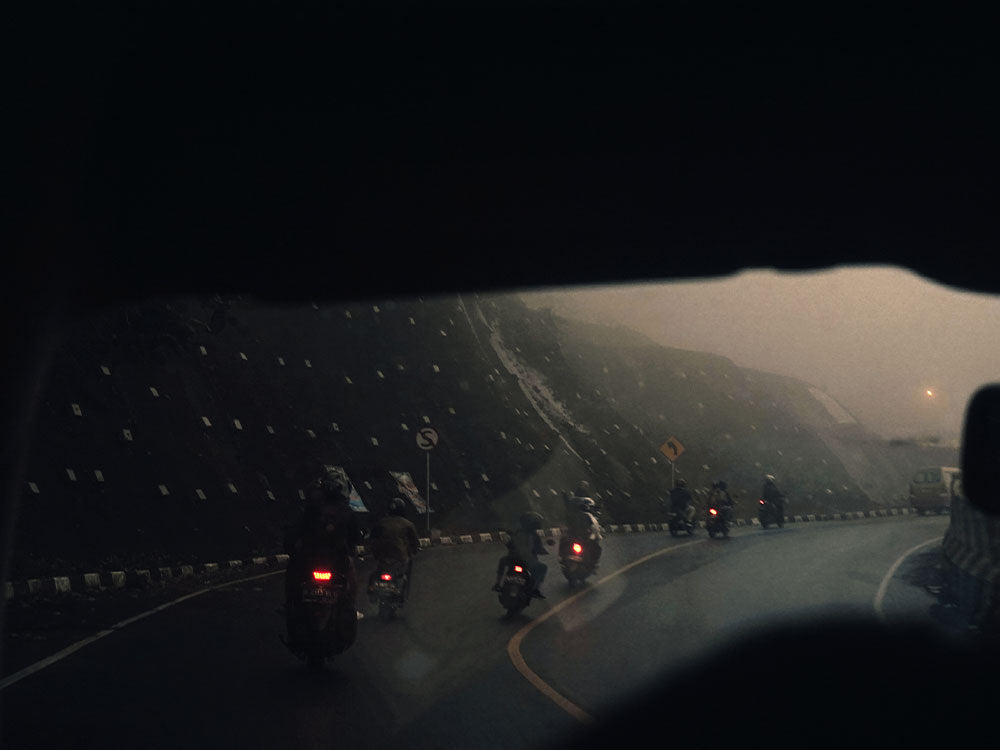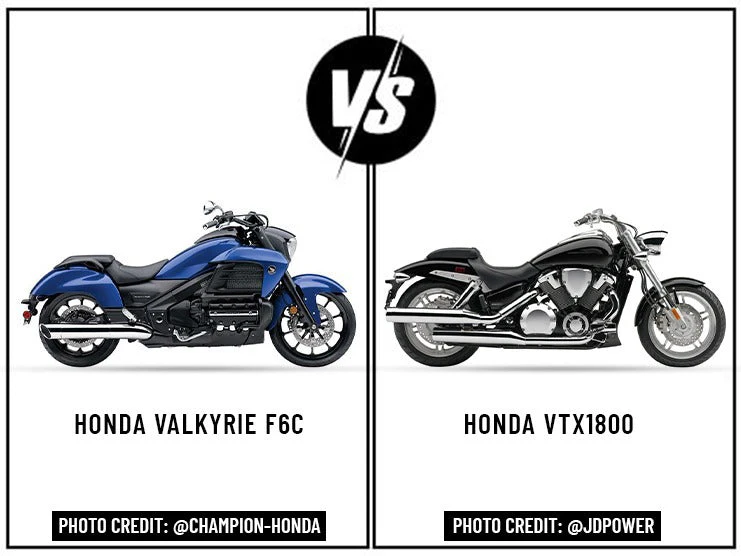What is the best way to stop a motorcycle in the rain? Should you ride a motorcycle after it rains? Is it unwise to ride a motorcycle in cold weather? What is the best way to stop a motorcycle from sliding on wet roads?
Motorcycles often slide on wet roads more easily than automobiles due to their smaller size and weight. Sliding can occur when a motorcycle is turning, braking, or accelerating.
Avoid suddenly increasing speed or changing direction to prevent your motorcycle from sliding. This article discusses ways to prevent your motorcycle from slipping on wet roads.
Table of Content
1. Motorcycle Sliding on Wet Roads

It can be dangerous to ride motorcycles since they are less stable than cars and trucks and offer less protection for the riders. One of the biggest dangers to motorcycle riders is sliding on wet roads.
When a motorcycle slides, it is often because the rider is going too fast. Wet roads can be dangerous since the slippery surface causes motorcycles to lose traction. When this happens, the rider can be thrown off the bike and seriously injured.
Possible ways motorcycle riders can avoid sliding on wet roads are to slow down, leave a larger buffer space, and avoid puddles.
2. Ways to Stop Your Motorcycle from Sliding on Wet Roads
Motorcycles are more likely to slide on wet roads due to their narrow tires and weight. Riders can keep their motorcycles from sliding by following these steps:
2.1 Weight Distribution
- Always keep your weight centered on the motorcycle. This will help you better maintain control and stability, especially when cornering.
- When braking or accelerating, shift your weight forward or back to help keep the motorcycle balanced.
- If you need to brake suddenly or make an emergency stop, shift your weight to the rear to keep yourself from being flung over the handlebars.
2.2 Proper Braking
Applying the right amount of pressure and knowing when you should use the brakes can help prevent sliding. Try following the tips listed below:
- Use the front and back brakes.
- Apply the brakes gradually, to avoid the wheels locking up.
- Use your body weight. Lean back to help slow down and maintain stability when braking.
2.3 Check Your Motorcycle Tires
Tires are the only motorcycle parts that are in constant contact with the road, and play a crucial role in braking, cornering, and handling.
Sliding can also occur due to worn-out, deflated, or damaged tires. Always check the condition of your tires and make sure they are properly inflated.
If you’re unsure how to check your tires, go to a qualified mechanic for help.
2.4 Cornering
Cornering takes a lot of skill and practice to master, especially when riding over wet roads. Here are some tips on how to turn corners on a motorcycle:
- Approach the turn slowly. This will give you time to assess your surroundings before you make the turn
- Look around to check for incoming vehicles and where you are going
- When cornering, lean your body in the direction you are turning while keeping your weight centered.
2.5 Adjusting Suspensions to Better Suit Weather Conditions
When the weather conditions turn bad, you must adjust your motorcycle's suspensions accordingly. Remember a few things when adjusting your suspensions due to bad weather conditions:
- Increase the spring pre-load to keep the bike from losing traction
- Adjust the rebound damping to ensure it better absorbs impacts when traveling over bumps in the road
- Decrease the compression damping to keep the wheels from locking up when braking on wet roads
2.6 Slow Down
Rain and fog can make it difficult to see along with making the road more slippery. When riding in the rain, slow down and constantly be on the lookout for potential road hazards.
2.7 Avoid Puddles
When riding, avoid puddles since you cannot tell how deep they are at a first glance. When approaching a puddle, follow these steps:
- Look ahead for puddles.
- If you see a puddle ahead, slow down and ride around it.
- Avoid riding through puddles if possible.
- If you must ride through a puddle, reduce speed to minimize the risk of hydroplaning.
2.8 Be Aware of the Surroundings
As the weather gets colder, road conditions may change as a result. Motorcyclists are especially prone to sliding on ice or wet pav ement.
Try to check the weather forecast before heading out. Equip your motorcycle with the proper gear for rainy weather.
2.9 Go with the Flow of the Bike
“Go with the flow” means letting your motorcycle slide on the wet road for a moment before regaining control. Rather than suddenly braking or turning suddenly, let the bike slide for a little bit to avoid crashing. Do not use the throttle and let the bike gradually slow down on its own. Once the wheels have regained traction, you can regain control of the bike and continue.
3. Things You Should Check to Avoid Motorcycle Sliding
Before riding your motorcycle in the rain, check the following:
- Check the weather forecast before you head out. If it is going to rain, consider postponing your ride or choosing a different route
- Pay attention to the road. If the road is wet or slippery, slow down and ride carefully.
- Check the tires and refill them if necessary
- Do not suddenly apply the brakes
4. Why Motorcycles Slide on Wet Roads
When a motorcycle slides on wet roads, it is usually due to the rider going too fast or the bike suffering mechanical issues.
If the rider was going too fast, they may have been trying to turn a corner too quickly and lost traction.
If the motorcycle was suffering from mechanical issues, it could have been faulty braking or a flat tire.
4.1 How to Stay Dry When Riding a Motorcycle in the Rain
If you want to ride in rainy weather without getting too wet, implement these tips to help stay dry:
4.2 Wear Appropriate Riding Gear & Clothing
Wear a high-quality motorcycle raincoat or jacket that is waterproof and facilitates runoff.
4.3 Maintain Your Vehicle
Make sure your motorcycle is regularly maintained, replace worn-out parts, and apply repairs if necessary.
4.4 Have Backup Clothes
Carry a spare set of clothes to change into if you get wet.
5. FAQs
5.1 Why are motorcycles not suited for wet roads?
Motorcycles are not suited for wet roads because the narrow tires have less surface area, traction, and contact with the ground.
5.2 Is it safe to ride a motorcycle in the rain?
Yes, riding a motorcycle in the rain can be dangerous. The roads are slippery, making it easy to lose control of your bike. If you decide to ride in the rain, be extra careful and travel slowly. Watch out for puddles be extra careful when turning to avoid skidding.
5.3 What Are Safe Ways to Stop on a Wet Road?
- Avoid suddenly squeezing the brakes
- If you need to use your brakes, apply them slowly and steadily to prevent the wheels from locking up
- Always give yourself plenty of room to stop and put distance between you and the vehicle ahead
5.4 Can rain damage my motorcycle?
While rain can damage your bike, as long as you take the proper precautions, you can minimize the risk.
6. Takeaway
You can keep your motorcycle from sliding on wet roads by riding cautiously and taking precautions. Slow down when riding on a wet road, avoid puddles, and be extra careful when turning corners or changing lanes.
If your motorcycle starts to slide, remain calm and shift your weight to regain control of your motorcycle. Enjoy riding your motorcycle through the rain. You need to install crash bars on your motorcycle to avoid serious damage. Make sure to carry rain gear in your motorcycle luggage like saddlebags, sissy bar bags, or backpacks.













Leave a comment
All comments are moderated before being published.
This site is protected by hCaptcha and the hCaptcha Privacy Policy and Terms of Service apply.